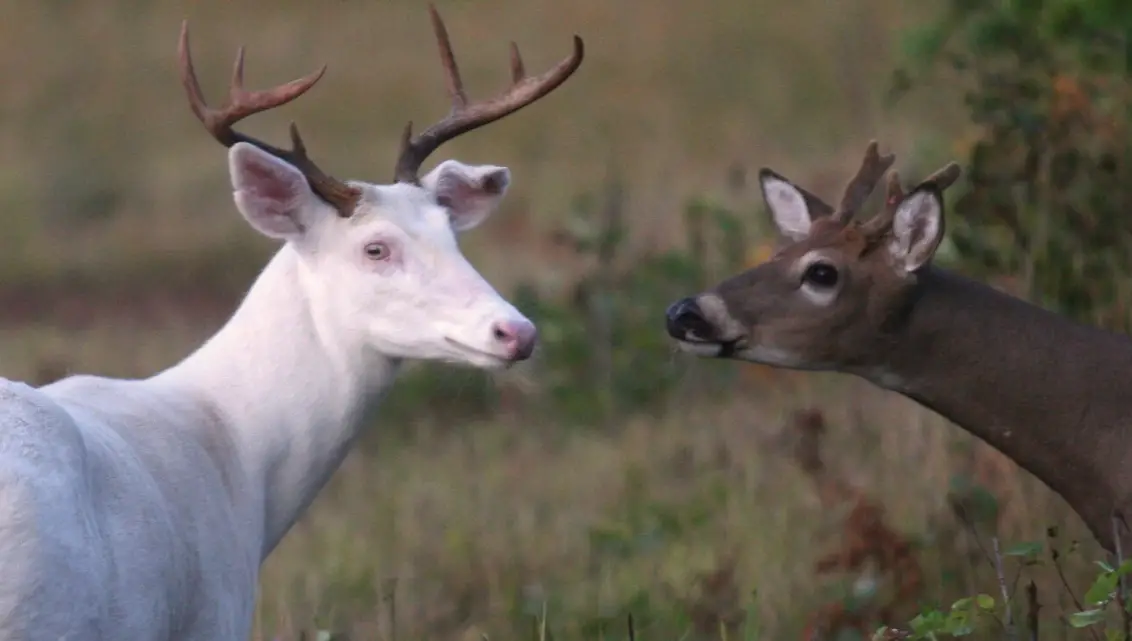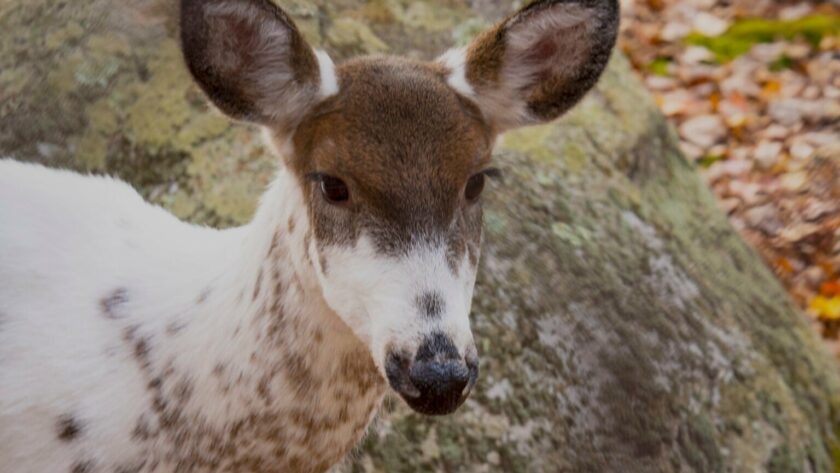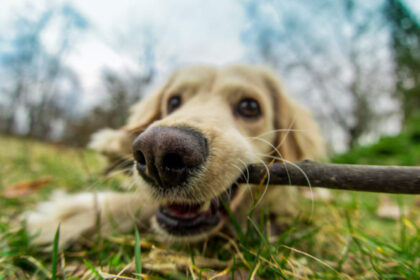Deer are plentiful in many states and especially in Wisconsin, where some of the biggest bucks in the entire contiguous United States are routinely harvested by hunters.
When hunters come across a massive eight-point buck, they typically don’t hesitate, especially knowing how difficult such opportunities are to come by.
Recently, two types of deer have been in the news: piebald and albino deer, which led one hunter and writer from the magazine Field & Stream to recount his experience encountering these rare and exquisite creatures.
The man, Scott Bestful, said he heard “the unmistakable shuffle of a buck plodding through leaves” that had him “hanging the horns and reaching for (his) bow as quickly as possible.”
It all happened on a November afternoon, Bestful said, adding that he “still remember(s) the flashes of white (he) saw as the buck approached.”
Considering that he was in dairy country, he wondered if it had been a stray cow. It turned out to be anything but, Bestful said according to the January 11 article.
He would soon bear witness to a creature he could only describe as looking like a “winged Pegasus” in its wild and majestic nature.
According to Bestful, the 10-point creature “tromped to the edge of bow range,” looked around out of caution and then flicked his tail before walking on.
The buck, spotted in Buffalo County, was fully protected by state law, he added, and the hunter counts it as one of his most incredible and exciting trips of all-time.
He said that he would have spared its life even if the law had not been on the books.
“I’ve been deer hunting for nearly 50 years, and I still count that encounter as one of my most memorable and certainly most mythic.”

Encounter Number Two Was Perhaps Even More Memorable
The second encounter also happened in Buffalo County, Wisconsin according to Bestful.
He says according to the magazine that he was followed to his hunting stand by a rare piebald doe, which can be seen in the picture at the top of this article.
Piebald deer account for only about two percent of the population, Bestful said, and this particular doe was “simply beautiful, with cream-white patches on her neck, pure-white markings on her shoulders and flank, and a pear-shaped saddle on her back” that reminded the man of “an Appaloosa horse.”
That is, of course, when the dilemma happened for the man.
“On one hand, this was a perfectly legal deer, and I had an empty freezer,” he said.
To make matters more challenging, the man said his friends considered such a deer to be a “unique trophy” that he would be “crazy” not to take home with him, after shooting her, of course.
Bestful decided to follow his heart instead of the suggestions of his peers, and the rest is history.
“On the other hand, well, she was simply the prettiest whitetail I had ever seen in many decades of watching whitetails,” he added according to the article, which can be read in full here.
After running the calculations in his mind, Bestful decided not to shoot the beautiful and rare deer, and said he believed that she lived for another five years after their encounter, hopefully having lots of babies during those years, he added.
Hunter Spills the Beans on Why He Spared Deer’s Lives
At the conclusion of his essay, Bestful spilled the beans on why he decided to spare the deer’s lives.
While several other hunters have argued that there should be no reason for sparing the deer, especially considering they are more prone to disease and predation than other species, there was something truly unique that Bestful could not quantify.
This is what made him decide to pass on taking home the deer for his freezer or trophy mantle.
He summed his decision up masterfully in the article, part of which can be read below.

Practicality and logic aren’t everything. There’s beauty and awe to consider. When I reflect on my nearly 50 years of deer hunting, I realize how important it is to me that my sport possesses moments of beauty; if chasing whitetails just boiled down to filling a freezer or filling up an empty spot on the trophy wall, I probably would have become bored long ago.
Instead, I return to the woods every fall to witness things that I can’t anywhere else—and often return home with nothing more tangible than a memory.
The white deer I’ve encountered are etched in my mind as indelibly as any trophy buck. Even all these years later, I can see those deer in my mind’s eye and feel a sense of awe that distills the reason I go to the woods in the first place.





